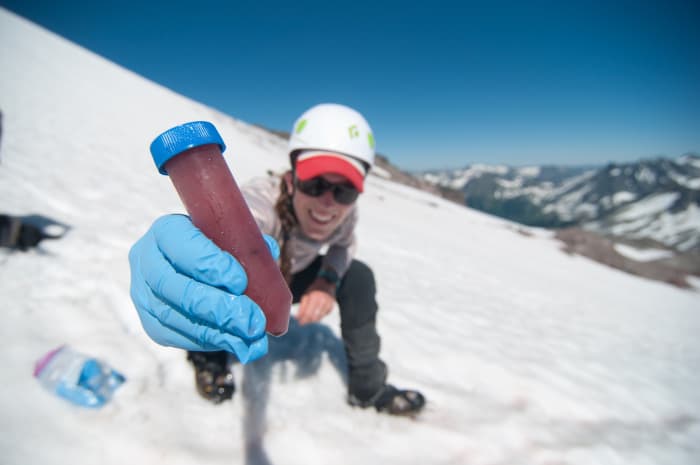
Citizen Science: An Ode to Collaboration
If you asked me how I would describe myself on any given day, I might say that I am an educator and a student, a (slow) runner and hiker, a curious traveler, or even an addicted coffee drinker. What you would never hear me call myself is a scientist.
For myself, and I believe many others out there, the world of science can feel intimidating. As someone who loves and cares about the outdoors, I appreciate and respect the professional scientists who have dedicated their careers to understanding environmental and climate issues. I hope to do my part as an experiential educator, connecting youth and adults to the natural world, but I never saw myself as being capable of meaningfully contributing to “real science”. That is, until I learned about citizen science.
Citizen science involves collaboration in scientific research between professional and amateur scientists— now that sounds like something more my speed! Some of the most famous examples of citizen science are large scale-bird census surveys such as Audubon’s Christmas Bird Count, and
HawkWatch International’s raptor surveys.

Through a process of discovery, I have found that not only is citizen science accessible to curious non-scientists like myself, but the collaboration between science and society benefits everyone involved.
For scientists, incorporating volunteers can exponentially increase the amount and geographic span of data collected, even when funding is short. Furthermore, citizen science projects offer the opportunity for scientists to engage in scientific outreach, fostering education and behavior change – such as environmental stewardship or community involvement in environmental policy – among volunteers that they normally wouldn’t interact with through their work.
For volunteers of all ages, participating in citizen science projects offers educational opportunities, a sense of altruism (the opportunity to contribute to the good of society through science), and the chance to collect data that is personally valuable.
For educators, incorporating age-appropriate citizen science projects into classrooms can make science more accessible to young students, supporting interest and learning in STEM fields. 3 Furthermore, engaging students in outdoor citizen science projects in both urban and rural environments fosters environmental awareness, providing students with the opportunity to notice, understand, and connect with environmental changes in their community.
Right here in the Pacific Northwest, there are a variety of projects that volunteers can engage with in the time and space that they have. There are projects like The Living Snow Project which require no training and simply asks for volunteers who are already recreating in the mountain to carry a test tube to collect samples of pink watermelon snow.

watermelon snow, Photo by Ben Johnson, courtesy of The Living Snow Project]
And there are more involved projects like RE Sources’ North Sound Stewards Program which asks for a larger commitment coupled with extensive training in conducting near shore marine environment surveys. Regardless of your age, ability, time, and interests, there are local and international projects that are the right fit for you or your classroom.
Citizen science has the power to bridge science and society, making both stronger and more well informed in the process. But what if that bridge still looks unwelcoming to some?
This year, the International Audubon Society realized that including citizens in science can make the world of science more accessible, but only if potential volunteers see themselves in the word “citizen”. The use of citizen in the original term citizen science was meant to distinguish between professional and amateur scientists; citizenship in one country or another has never been a prerequisite to participating.
With that in mind, Audubon announced in May of 2018 a new policy in line with their Equity, Diversity, and Inclusion strategy: all current and future citizen science projects are now known as community science projects. You can read more about Audubon’s decision and their overarching EDI strategy on their website here.
In today’s political climate where the use of the terms citizen and citizenship are so polarizing, and in my opinion, exclusionary, let’s follow Audubon’s lead and ensure that powerful collaboration between science and society is accessible to everyone. With that in mind, I have a major edit in the title of this blog post…
Citizen Community Science: An Ode to Meaningful and Inclusive Collaboration
Now let’s get out and contribute to science!
This post was researched and written by Christine Sanderson for the Northwest Natural History course as part of the Institute’s Graduate M.Ed. program. North
Cascades Institute has not extensively fact-checked the information contained herein and recommends researching other sources of information to enhance one’s understanding of the topic.

